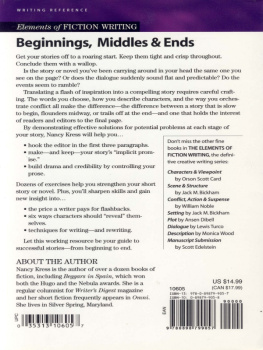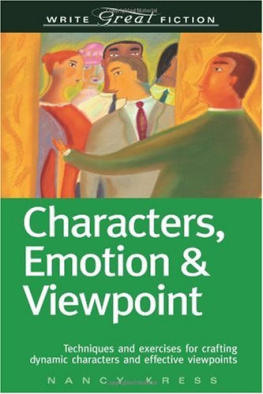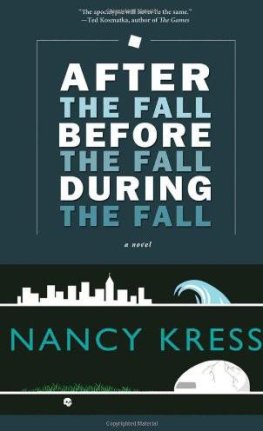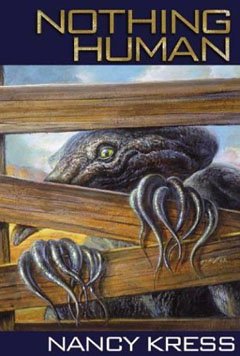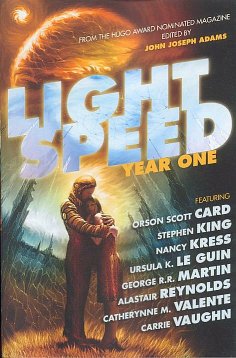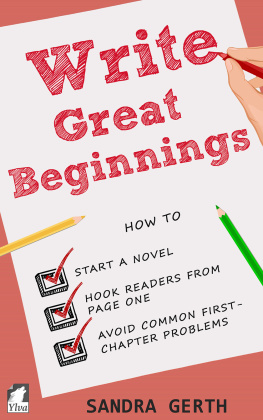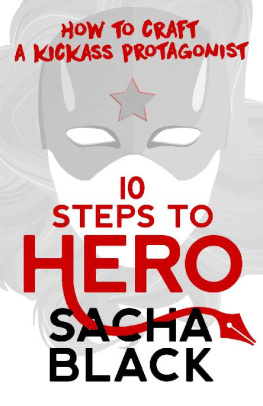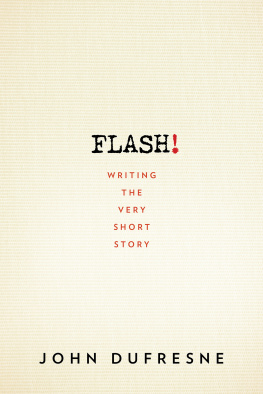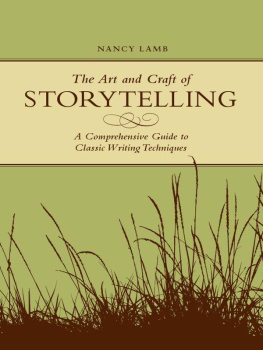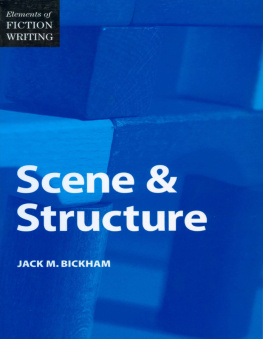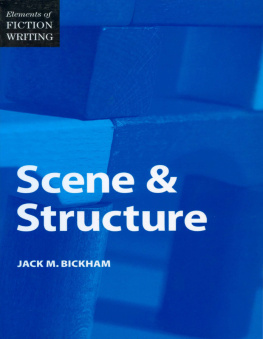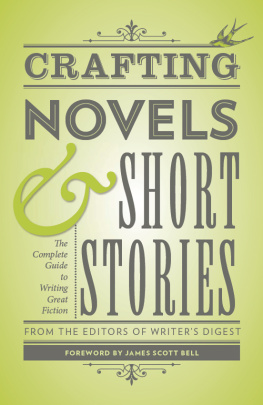
ABOUT THE AUTHOR
Nancy Kress is the author of over a dozen books of fiction, including Beggars in Spain, which won both the Hugo and the Nebula awards. She is a regular columnist for Writer's Digest magazine and her short fiction frequently appears in Omni. She lives in Silver Spring, Maryland.
BEGINNINGS,
MIDDLES
AND ENDS
BY
NANCY KRESS

Excerpt from the short story Lily Red by Karen Joy Fowler used with permission of the author.
Beginnings, Middles and Ends. Copyright 1993 by Nancy Kress. Printed and bound in the United States of America. All rights reserved. No part of this book may be reproduced in any form or by any electronic or mechanical means including information storage and retrieval systems without permission in writing from the publisher, except by a reviewer, who may quote brief passages in a review. Published by Writer's Digest Books, an imprint of F + W Publications, Inc., 4700 East Galbraith Road, Cincinnati, Ohio 45236; (800) 289-0963. First paperback edition 1999.
Portions of this book have previously appeared in Nancy Kress's Fiction column in Writer's Digest magazine.
Other fine Writer's Digest Books are available from your local bookstore or direct from the publisher.
Visit our Web site at www.writersdigest.comfor information on more resources for writers.
To receive a free weekly e-mail newsletter delivering tips and updates about writing and about Writer's Digest products, send an e-mail with the message Subscribe Newsletter to newsletter-request@writersdigest.com, or register directly at our Web site at www.writersdigest.com.
10 12
Library of Congress Cataloging-in-Publication Data
Kress, Nancy.
Beginnings, middles and ends / by Nancy Kress.1st ed.
p. cm.
ISBN 13: 978-0-89879-905-7 (pbk. : alk. paper)
ISBN 10: 0-89879-905-8 (pbk. : alk. paper)
1. FictionTechnique. I. Title.
PN335.K73 1993
808.3dc20 92-29822
CIP
Edited by Tack Heffron 
For Miriam,
Nick, Mark, and
all the other writers
I've been privileged to work with
as students
A writer's problem does not change. He himself changes and the world he lives in changes but his problem remains the same. It is always how to write truly and having found what is true, to project it in such a way that it becomes part of the experience of the person who reads it.
Ernest Hemingway
CONTENTS
INTRODUCTION
THE STORY
IN YOUR HEAD
There's a story in your heador maybe just the start of a story. Characters are walking around in there, talking to each other, doing things to the furniture, gesturing and shouting and laughing. You can see it all so clearly, like a movie rolling in your mind. It's going to be terrific. Excited, you sit down to write.
But something happens. The story that comes out on the page isn't the same as the story in your head. The dialogue is flatter, the action doesn't read right, the feel just isn't the same. There's a gap between the story you can visualize and the one you know how to write. And at the moment, that gap resembles the Mariana Trenchdeep, scary and uncrossable.
If you've ever felt this way about your writing, you're not alone. The truth is that there's always a gap between the story as you imagined itcompelling, insightful, rich with subtle nuanceand what actually ends up in the manuscript. This is because stories must be written, and read, one word at a time, with information accumulating in the reader's mind to create the full picture. This slow, linear accretion of impressions can't ever quite equal that perfect flash of inspiration in which all the parts of the storyaction, meaning, nuances, insights, all of itburst into the brain all at once. Words, unlike movies, are not a multisensory event. Words are symbols, and symbols don't work directly on the human senses. They work secondhand, through suggestions to the reader's imagination, through words describing what you saw in your imagination.
No wonder there's always a gap between the story in the writer's head and the one she puts into the reader's head.
For professional writers, that gap may be small. A professional learns what information to presentand in what orderto make the words convey her original vision as closely as possible. The beginning writer must learn this, too. One way to do that is to write a lotsome people say a million wordsuntil you get better through trial and error. Another is to receive reliable criticism on which parts of your story are conveying your vision and which are not. A good writing class can do this for you. A third way is to read books like this to learn how good writers present information to their reader's imagination.
That third way isn't really sufficient by itself, of course. Learning about writing won't help you write better unless you actually apply what you learn to a story in progressjust as learning about the ideal golf swing won't improve your score unless you actually practice on the links. There's no substitute for practice. The Mariana Trench doesn't get crossed by discussing it.
Nor will this book help you improve the quality of the story in your head. That vision comes from everything about you: your experiences, your imagination, your beliefs about the world, your powers of perception, your interests, your sophistication, your previous reading, your soul. Vision, sometimes called talent, is not a teachable attribute.
What is teachable, and what this book can help you with, is craft. Craft is the process of getting the story in your head onto the page in a form that readers can follow, and remain interested in, and enjoy. Finding that form means making literally hundreds of decisions in the course of a short story: What do I show first? How much background should I tell here? What scene should I put next? This plot development or that one? This noun, or that one? This ending, or something else I haven't thought of yet? Help!
Craft can be helped. Craft can be taught. Craft can help you narrowif not completely eliminatethe gap between the story in your head and the story on the page. Craft is a set of navigation tools for crossing the Mariana Trench.
THREE PATTERNS FOR STORIES THAT AREN'T WORKING
In my years of teaching, I've noticed three distinct patterns in student stories, which are often also habitual patterns for the stories' writers. One kind of story starts very slowly. Events drag, characters seem confused, and even the prose is a bit clumsy. Then, somewhere around page five for a short story or chapter three for a novel, the writer suddenly hits his stride or finds his voice. The story picks up, and from that point on it becomes more and more interesting.
This writer needs help with beginnings.
A second type of story starts well, with a strong hook and a sure tone. The first scene presents intriguing characters and raises interesting questions. Sometimes even the second scene works well. After that, however, the story flounders. It's as if the writer didn't know how to answer the intriguing questions, or develop the characters and their situation. In desperation he plunges ahead anyway, and the story winds down into confusion or dragginess or boredom.
Next page
